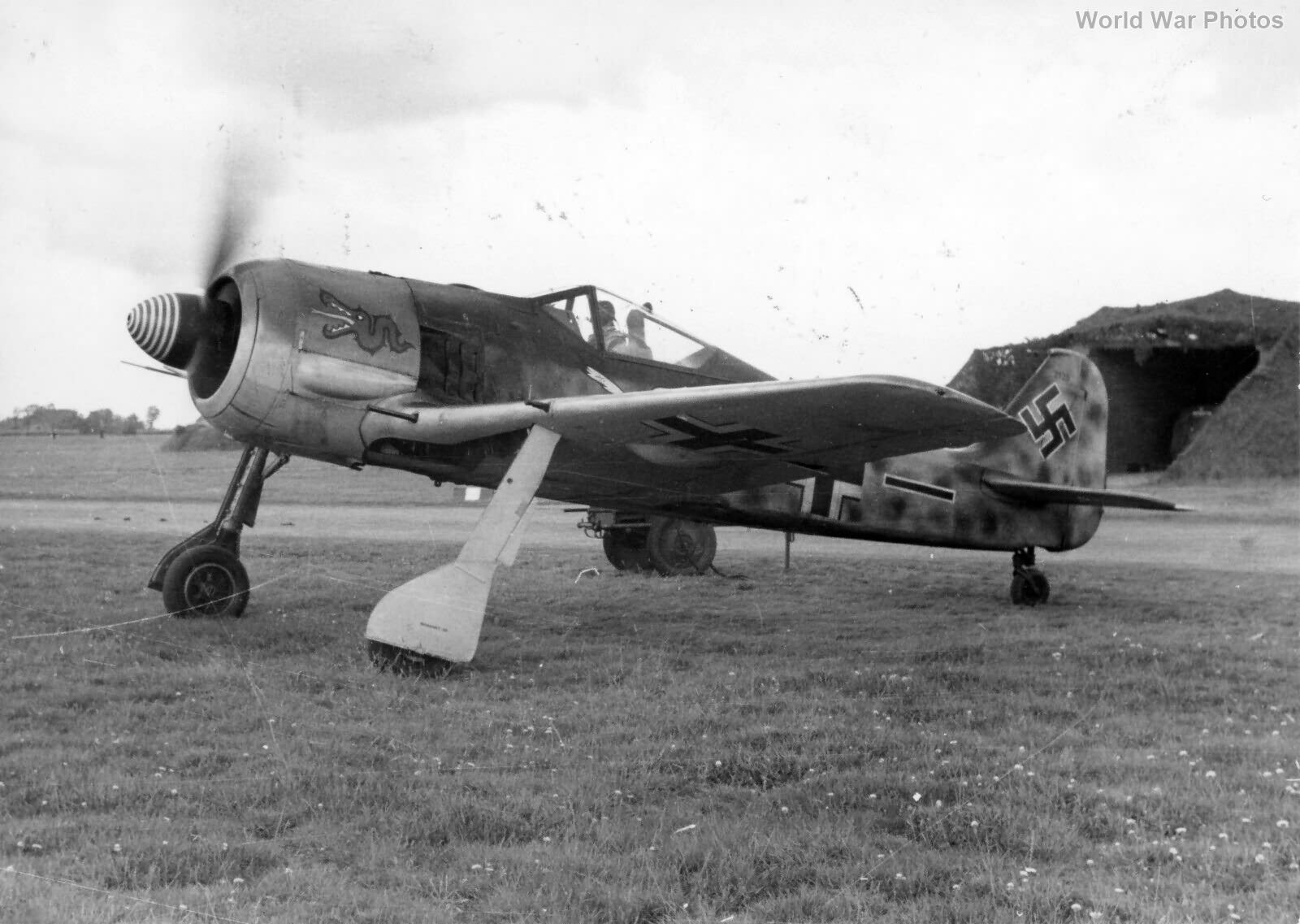The Luftwaffe’s Jagdgeschwader 2 (JG 2) and JG 26 enjoyed significant success with the Focke-Wulf Fw 190, particularly in 1942, where they were credited with downing around 300 enemy aircraft, including at least 272 Spitfires according to British reports. This operational success, along with continuous improvements from Focke-Wulf, paved the way for the development of the Fw 190 A-3 series.
The Fw 190 A-3 featured several advancements over its predecessors. The new variant was equipped with the BMW 801D-2 engine, which offered a substantial increase in power, producing up to 1250 kW (1700 hp). This version of the engine had a higher compression ratio (raised from 6.5 to 7.22) and enhanced boost pressure, along with a more sophisticated three-gear turbocharger. However, despite these upgrades, the engine was limited to combat power settings and could not sustain maximum output continuously.
Armament and Versatility: The A-3’s standard armament configuration included two MG 17 machine guns mounted over the engine and two MG FF cannons, with the option to replace the MG FFs with MG 151 cannons for a higher rate of fire. This flexibility in armament made the aircraft versatile, capable of being outfitted for different roles, including as a fighter-bomber, reconnaissance plane, and even as a night/all-weather fighter or torpedo bomber. This versatility led to the aircraft being produced in large numbers, with various field conversion kits available to adapt it to specific mission requirements.
Production and Deployment: The Fw 190 A-3 entered production at several facilities, including those of Focke-Wulf, Arado, Fieseler, and AGO. Specific models within the A-3 series, such as the A-3/U1 (Werknummer 270) and A-3/U3 (Werknummer 385), were developed for specialized roles like reconnaissance and light bombing. Additionally, 72 Fw 190Aa-3 units were delivered to Turkey under the codename “Hamburg” between October 1942 and March 1943, where they served until 1948.
Testing and Performance: Wind tunnel tests conducted in France demonstrated the impact of external loads on the aircraft’s performance. A single pylon carrying a 250 kg bomb or a drop tank reduced the Fw 190’s speed by 45 km/h at sea level and 55 km/h at 6500 m altitude. Additionally, two underwing ETC bomb racks alone, without bombs, decreased airspeed by 13.7 km/h, adding 64 kg to the aircraft’s weight, while full drop tanks under the wings resulted in a speed loss of 34.2 km/h and an extra 96 kg in dead weight. These tests highlighted the effects of external stores on the aircraft’s speed and handling characteristics.
